






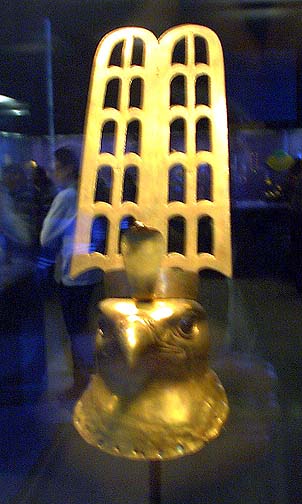
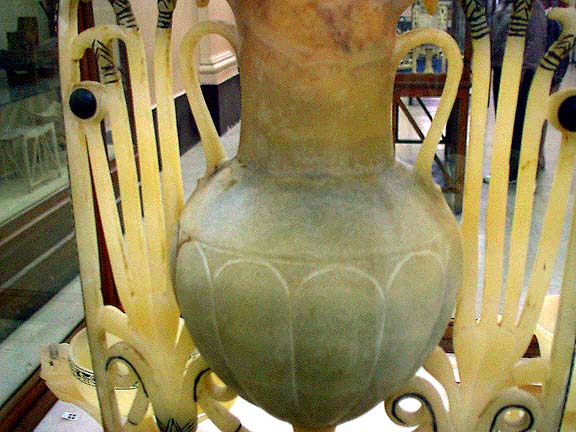
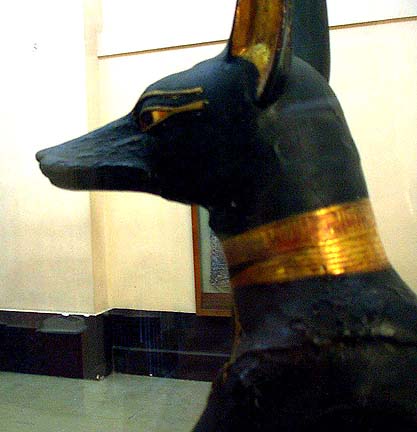
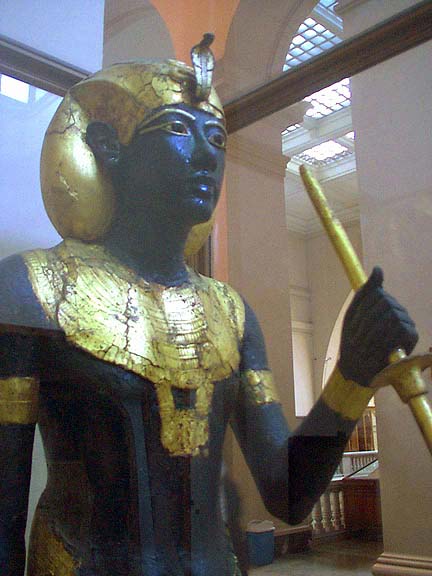
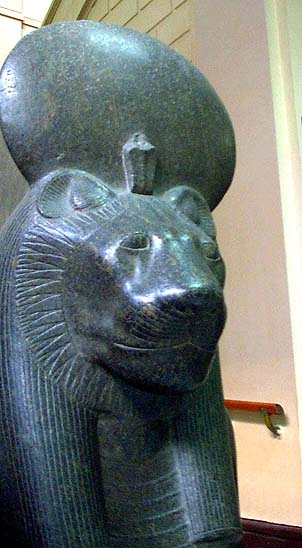
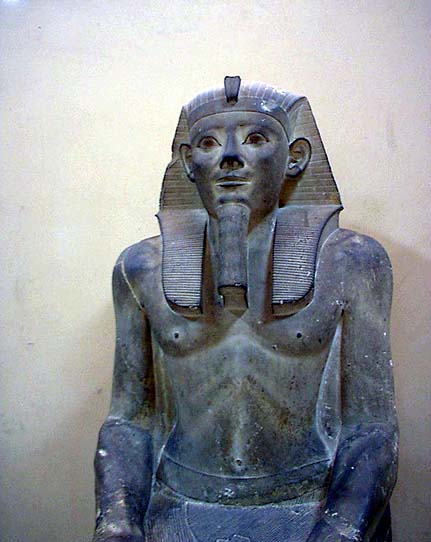
|
Original name TUTANKHATEN (fl. 14th century BC), king of Egypt (reigned 1333-23 BC), known chiefly for his intact tomb discovered in 1922. During his reign, powerful advisers restored the traditional religion and art style after the death of Akhenaton, who had led the "Amarna revolution." Medical analysis of his mummy shows that Tutankhaten was probably a brother of Smenkhkare, his immediate predecessor, and son-in-law of the great King Akhenaton, with whom Smenkhkare was coregent. As suggested by a docket from Tell el-Amarna (Akhenaton's capital Akhetaton) and other circumstantial evidence, young Tutankhaten probably became king after the deaths of Akhenaton and his coregent. Seals from Tell el-Amarna suggest that Tutankhaten resided there during his first year or two. He was married to Akhenaton's third daughter, probably the eldest surviving princess of the royal family, to solidify his claim to the throne. Because at his accession he was still young, his vizier and regent, Ay, who had ties with the royal family, and the general of the armies, Horemheb, became his chief advisers. Under their tutelage, Tutankhaten moved his residence to Memphis, the administrative capital, near modern Cairo, and restored his father's Theban palace. He also changed his name, at the latest by the fourth year of his reign, to Tutankhamen and issued a decree restoring the temples, images, personnel, and privileges of the old gods and also admitting the errors of Akhenaton's course. In spite of these capitulations to the Amon priesthood, no proscription or persecution of Aten, Akhenaton's god, was undertaken. Royal vineyards (up to the king's death) and elements of the army still remained named after the Aten. During his ninth year, perhaps under Horemheb, the Egyptians marched into Syria to assist Egypt's old ally, the Mitannian kingdom of northern Syria, which was embroiled in hostilities with vassals of the Hittites. As reinforcements sent by the Hittite king hastened to aid his vassals, Tutankhamen unexpectedly died, aged about 18 years. Because none of his children survived, Ay succeeded him, perhaps marrying his widow. Some time after his death, Tutankhamen's tomb in western Thebes (not his original, which Ay had appropriated for himself) was entered twice by plunderers who, however, were caught after doing only minor damage. The burial chamber was not entered and remained intact until it was discovered in 1922 by Howard Carter, the English Egyptologist who excavated the tomb. When in the 19th dynasty the "Amarna kings"--Akhenaton, Smenkhkare, Tutankhamen, and Ay--were stricken from the royal lists and publicly condemned, the location of Tutankhamen's tomb was forgotten, and his relatively few monuments were usurped, chiefly by his former general, Horemheb, who later became pharaoh. In the 20th dynasty, when the tomb of Ramses VI was cut immediately above that of Tutankhamen, the stone rubble dumped down the side of the valley covered the young king's tomb with a deep layer of chips. The workers of the 20th dynasty came close to Tutankhamen's tomb and clearly had no knowledge of it. The tomb escaped the great series of robberies at the end of the 20th dynasty and was preserved until a systematic search of the Valley of the Kings revealed its location. Inside his small tomb, the king's mummy lay within a nest of three coffins, the innermost of solid gold, the two outer ones of gold hammered over wooden frames. On the king's head was a magnificent golden portrait mask, and numerous pieces of jewelry and amulets lay upon the mummy and in its wrappings. The coffins and stone sarcophagus were surrounded by four shrines of hammered gold over wood, covered with texts, which practically filled the burial chamber. The other rooms were crammed with furniture, statuary, clothes, a chariot, weapons, staffs, and numerous other objects. But for his tomb, Tutankhamen had little claim to fame; as it is, he is perhaps better known than any of his longer lived and better documented predecessors and successors. Books on the subject include Howard Carter's The Tomb of Tutankhamun (1923-33) and Christiane Desroches-Noblecourt's Tutankhamen (1963). In 1977, in connection with a traveling exhibition of objects from the tomb, Tutankhamun: The Tomb and its Treasures, with text by I.E.S. Edwards and photographs by Lee Boltin and Harry Burton, was published. |